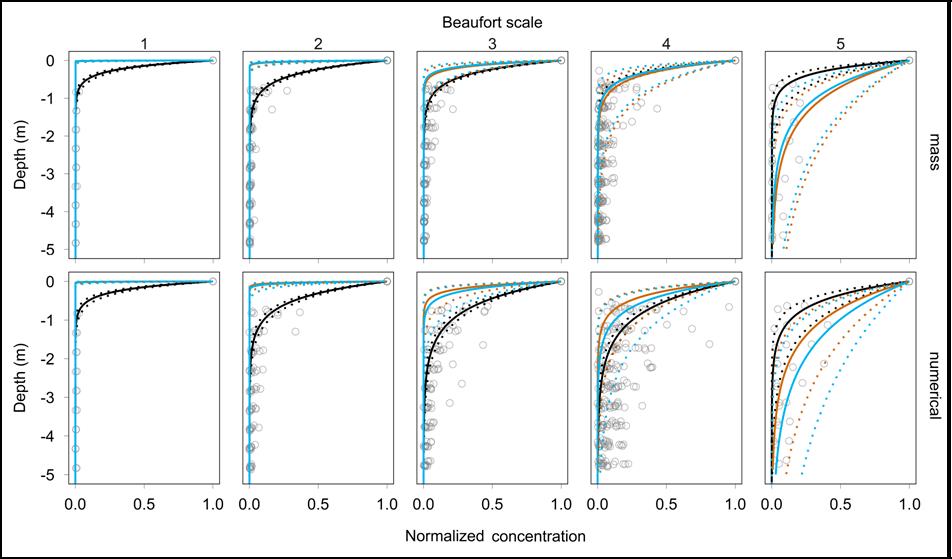
Ocean Plastic Mostly Near Surface, Study Shows
Back to updatesIt is a commonly held belief that plastic pollution is spread from the ocean surface to seabed. Our newest study, published today in Nature Scientific Reports, shows that at least for buoyant plastic bigger than a sand grain (0.5mm), this is not the case, primarily residing on or near the surface. It also reveals that conventional methods to study ocean plastic underestimate microplastic loads by up to 97% due to ocean mixing processes that push part of the debris just below these sampling devices. Understanding how plastic is distributed in the ocean is important to assess its impact and allows us to adequately dimension our ocean cleanup systems.
Ocean plastic comes in all shapes and sizes. Over time, UV degrades the plastic and, in combination with the mechanical impact of ocean waves, causes it to fragment into ever smaller pieces, known as microplastic – pieces smaller than 5mm across. Microplastics are considered to be among the most harmful types of plastic pollution because they are easily mistaken for food by a wide range of marine species, thereby easily entering the food chain.
The smaller the pieces get, the more sensitive they become to mixing due to wind and waves. Knowing up to which depths plastic is spread for example helps us determine how much plastic is in the ocean, but for The Ocean Cleanup, it is especially important because it determines until what depth the ocean should be cleaned.

To shed light on this topic, The Ocean Cleanup has been measuring the vertical distribution of plastic during 6 expeditions to the North Atlantic Garbage Patch, which took place from 2013 to 2015. The Ocean Cleanup designed a new research tool, called the Multi-Level Trawl, which allowed us to measure 11 water layers at the same time, from the surface down to a depth of 5 meters. Initial results were published in Biogeosciences last year, but having taken many more measurements since then, we can report much more accurate results today.
In our Ocean Plastics Lab, we measured the speed at which microplastics float back to the surface, looking at a variety of sizes and types. Summarizing what we found, most vertical mixing of microplastics takes place when the water conditions are rough, and that smaller particles are most sensitive. The smaller they are, the deeper they get when the wind picks up, also because the rising speed of these particles is slower than for larger pieces (so they stay deeper, longer).
To summarize the main conclusions of the study:
- Most buoyant plastic mass is within the top few meters of the ocean
- The higher the wind speed, the more profound the mixing becomes
- The type and shape of the plastic (fragment or piece of line) also has a large influence on the mixing
- Standard plastic sampling devices (which skims only the top ~15 cm of the ocean surface) underestimates the amount of microplastic by a factor of between 1.04 and 30.
- Microplastic concentrations decrease exponentially with depth, and approach zero within 5 meters of depth, regardless of the wind speed and particle type.
It is important to note the results only apply to microplastics. Larger sized plastic pollution – which by mass represents most of the plastic in the ocean – is more buoyant and stays even closer to the sea surface.

These results show our choice for making our system catch plastic down to 1.5 meters of depth is sufficient, even when looking at these millimeter-sized particles. Based on these findings we are now also correcting the surface measurements taken during the Mega Expedition to account for the plastic that is deeper than the trawls we used.

